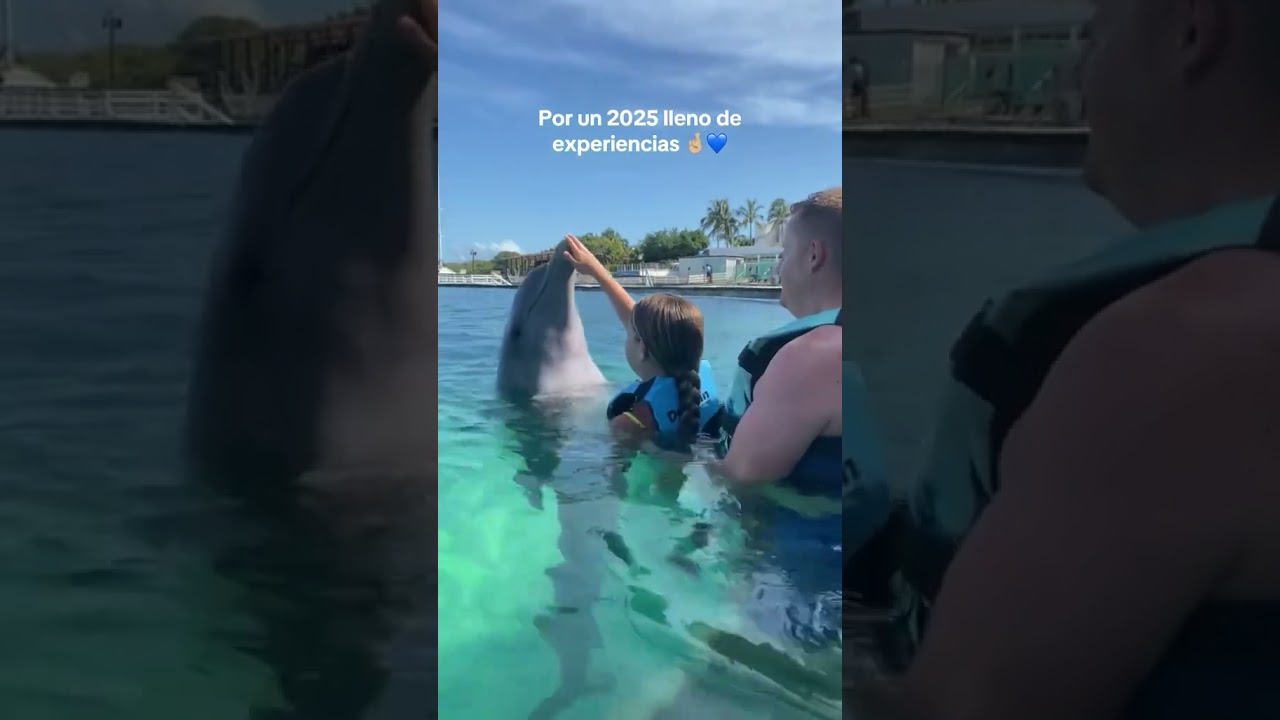-
Exploring the significance of "Que nuestro 2025 se vea así: 🙌🏻💙🐬" in promoting marine conservation and education.
-
Understanding the critical role of zoos and aquariums in advancing wildlife conservation efforts in the modern age.
-
Discussing the impact of digital media and video content in raising awareness and engaging the public in conservation initiatives.
-
Evaluating the collaborative efforts between zoological institutions, conservationists, and local communities to protect ocean ecosystems.
- Highlighting the scientific insights and educational strategies employed by conservation organizations to foster a sustainable future for marine life.
"Que nuestro 2025 se vea así: 🙌🏻💙🐬" is more than just an optimistic slogan; it embodies a commitment to safeguarding marine environments through a blend of public engagement, education, and scientific research. This initiative reflects a growing acknowledgment of our responsibility to protect ocean life, and it underscores the urgent call to action to preserve the biodiversity of marine ecosystems.
Zoos and aquariums play an indispensable role in this undertaking. These institutions have evolved from mere entertainment venues to vital conservation hubs. As stewards of both terrestrial and aquatic wildlife, they are strategically positioned to foster public understanding of biodiversity challenges. By showcasing diverse marine species and their ecosystems, they inspire audiences to take active roles in environmental conservation. In this context, "Que nuestro 2025 se vea así: 🙌🏻💙🐬" serves as a rallying cry to harness the educational potential of zoological facilities.
Furthermore, the initiative leverages the power of digital media and video content to amplify its message. By producing visually compelling and informative videos, conservationists can reach wider audiences and transcend geographical barriers. These multimedia tools not only capture the beauty of marine life but also illustrate the threats they face due to human activities. In doing so, they appeal to viewers’ emotions and intellect, motivating behavior change and supportive actions. Thus, video content is a potent force in the global conservation effort.
Collaboration is central to the success of such comprehensive initiatives. Partnerships between zoological institutions, conservationists, scientists, and local communities are crucial for effective conservation. By working collectively, these groups can implement practical solutions to challenges such as climate change, habitat destruction, and pollution. For example, joint projects can focus on restoring coral reefs, combating illegal fishing, or developing sustainable tourism practices. Through such synergy, "Que nuestro 2025 se vea así: 🙌🏻💙🐬" aims to create a future where marine ecosystems thrive.
In advancing conservation knowledge, scientific research underpins these efforts. Zoologists and marine biologists contribute valuable insights into the behavior, health, and population dynamics of aquatic species. These findings inform strategies to protect endangered species and their habitats. Education programs, often delivered through zoos and aquariums, are also key. They disseminate scientific knowledge in accessible formats, empowering individuals to make informed decisions about their environmental impact. Consequently, "Que nuestro 2025 se vea así: 🙌🏻💙🐬" is a mission grounded in both passion and empirical evidence.
By 2025, the vision is clear: a robust, interconnected framework for marine conservation that is rooted in public engagement, cross-disciplinary collaboration, and cutting-edge science. The initiative aspires to inspire others to embrace sustainable behaviors and policies that will leave a lasting positive imprint on our natural world.
*****
Source Description
#dolphindiscovery #goals #dreams #2025


